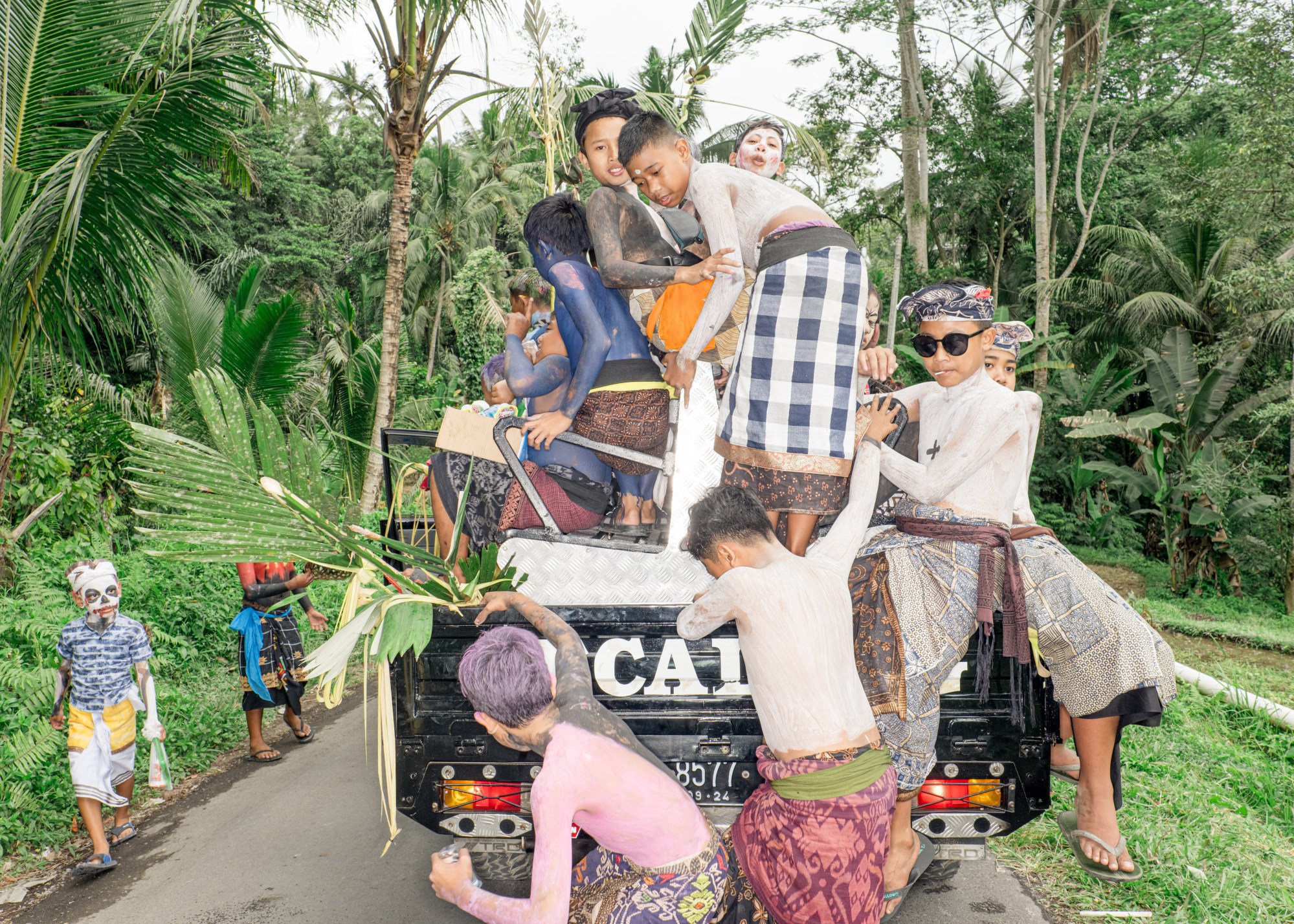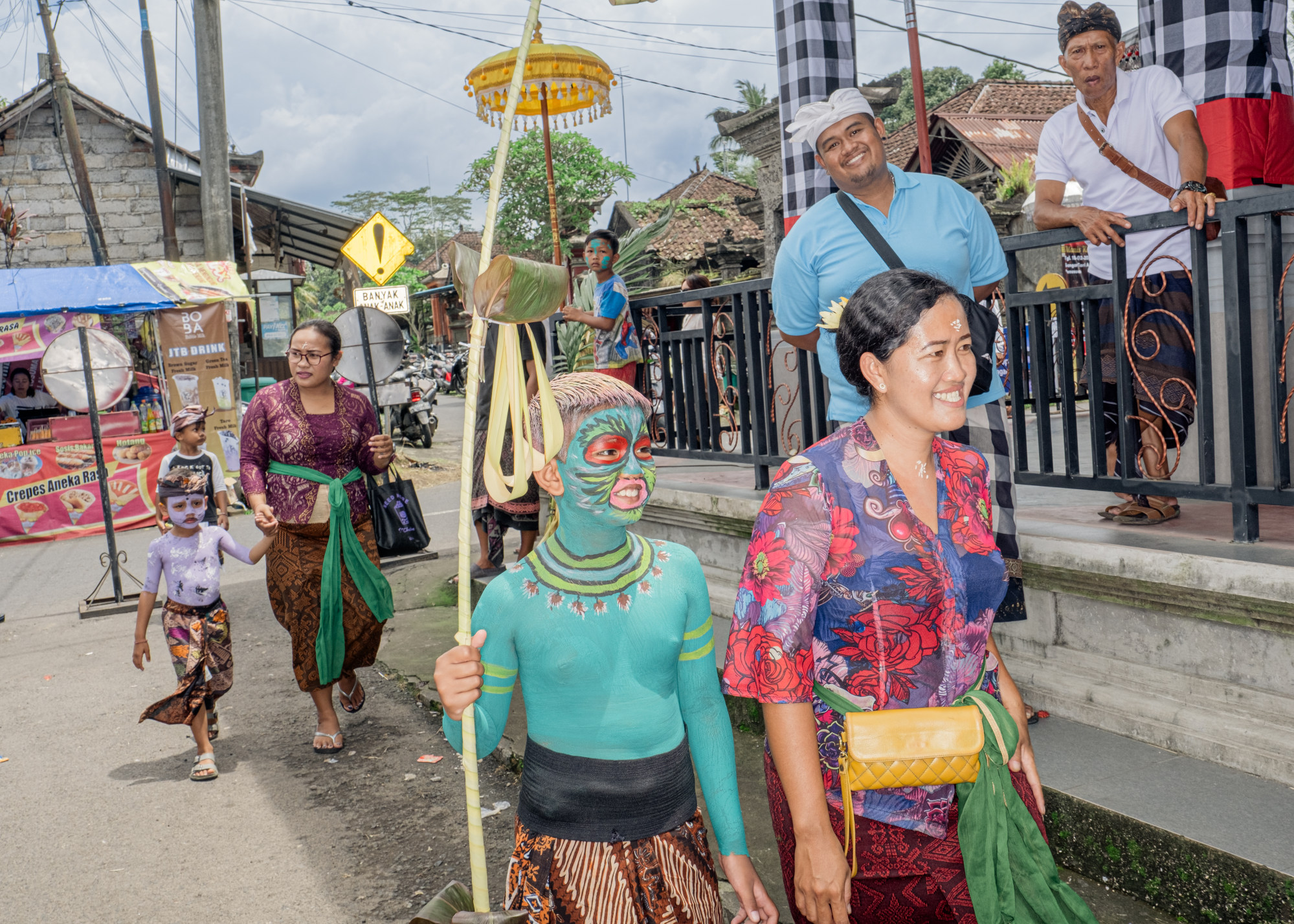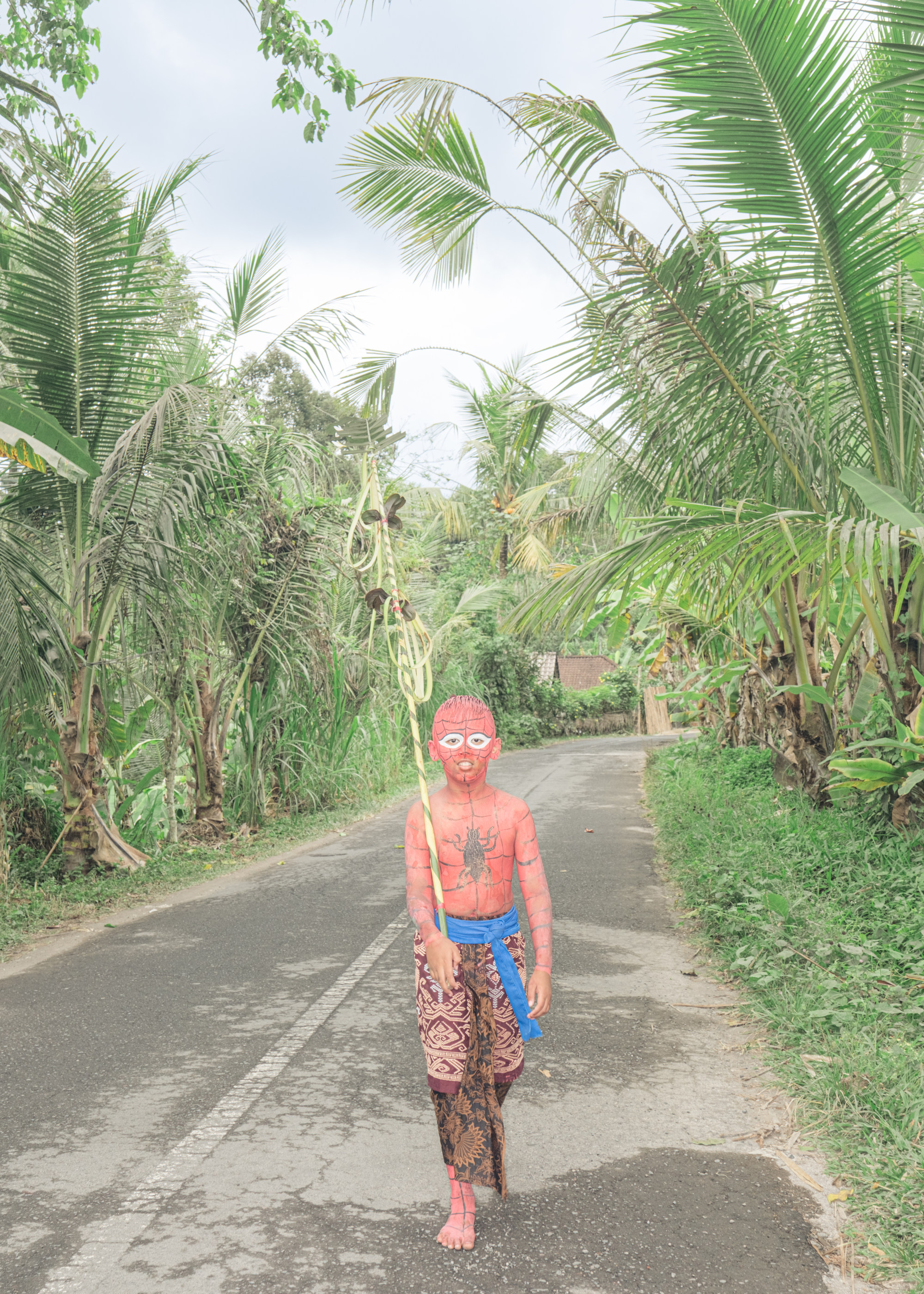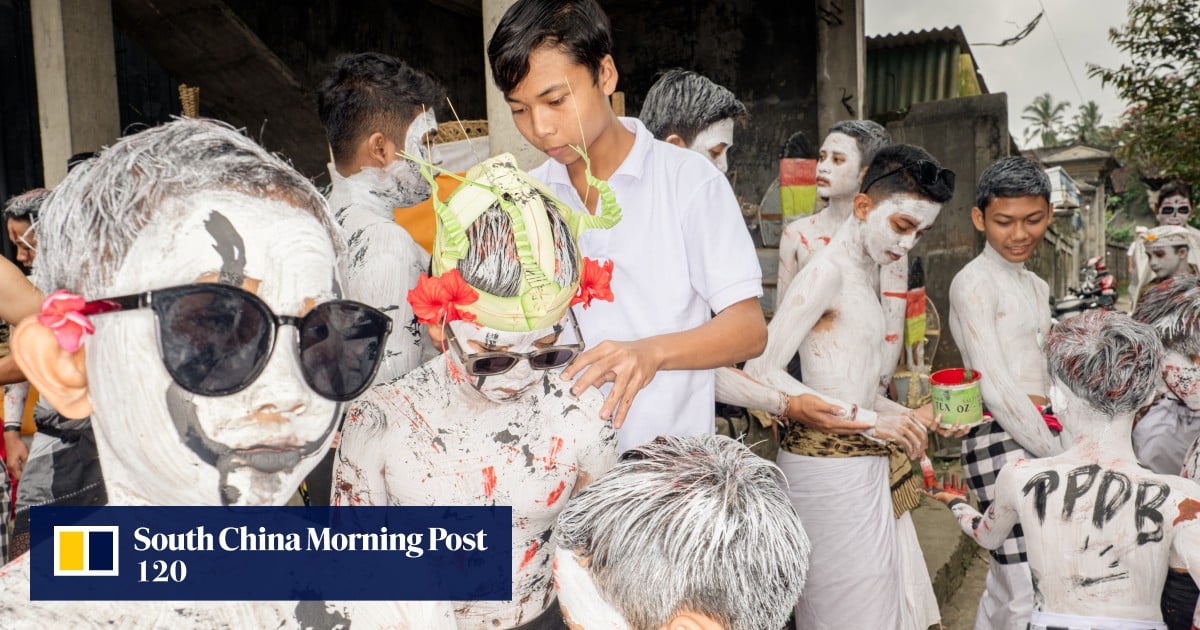The sky is grey and overcast that Wednesday. Early-morning rain has soaked the verdant Tegalalang village. But 10-year-old Pande Putu Aditama has met his friends at the community hall, and they are waiting patiently for their turn to have their bodies painted.
Within 10 minutes, Aditama, “Adit” to his friends, is up. The boy removes his shirt, and from his torso, up his face, and through his hair, he is covered in white pigment.
He is one of hundreds of children and adolescents taking part in this ancient ritual here in Tegalalang, a village near Bali’s well-known rice terraces at Ceking, 10km (six miles) north of the tourist magnet of Ubud.
The Ngerebeg parade takes place every six months. I followed Adit through the rituals in February and September.
“I don’t know what the parade ritual means,” he says, “but I know I must participate, and my teacher and my parents told me to participate whatever the weather.”


The Ngerebeg procession, which dates back to the feudal 17th century, starts at the Duur Bingin Temple, in the south of the village, with tall penjor (decorated bamboo poles) and colourful banners lining its outer walls. The temple’s shrines are covered with black-and-white and colourful cloth, and adorned with glittering ritual decorations.
Tegalalang villagers believe their land is home to supernatural beings, no fewer than 288 of them, called Wong Samar – invisible spirits who reside in the village’s riverbanks.
Legend has it that once upon a time, the village experienced an epidemic. The chief, Cokorda Ketut Segara, pledged to organise the Ngerebeg ritual to enlist the help of supernatural beings to protect the village from plagues.


This belief has its roots in the indigenous knowledge of Balinese Hinduism called Sekala Niskala, an understanding that the universe is based on a holistic view of how the living and non-living parts of the world interact.
“We consider forests, rice fields, riverbanks and big trees to be sacred, and if the sacredness is violated, they believe there will be a disaster for their family,” says Tegalalang local Agung Jerman.
“The significance of the younger generation in the village is essential in shaping social and cultural dynamics since the young generation acquires information through active engagement and involvement.”



The ritual starts with communal prayer and a special lunch called magibung, served on banana leaves, to everyone regardless of caste, age and social class.
The street parade begins at around 12pm. Each participant brings a bamboo stick or palm branch decorated with coconut leaves and marches 10km around the village.
The youth participants all have their faces and upper torsos painted in bright colours to resemble the supernatural beings and demons of Niskala (the unseen world). Sometimes, they show contemporary fashion that draws inspiration from various parts of the world as well as from popular figures, such as Spider-Man.

For children, however, what draws them to the Ngerebeg procession is the freedom to paint their bodies any way they like, and to join in a riotous parade alongside their friends.
“Since the 1st grade of junior school, I have taken part in the ritual,” says Adit.
“Even though it was a school day, my parents didn’t dare forbid me from taking part. Teachers already understand that if you take part, you will definitely get permission not to go to school.”

